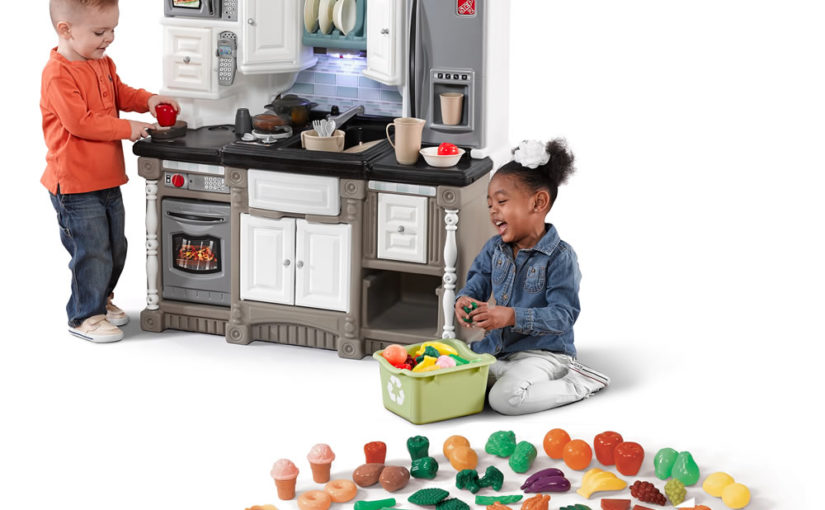Does your child love to play in the kitchen? Most small children go through the stage of wanting to be and do everything just like a parent/caregiver. One of the ways they show us this is imitating adults preparing food. They love the “real” kitchen stuff, even if they have the pretend kitchen and all the accessories that go along with that. Using play food and/or a pretend kitchen is a great way to expand both receptive and expressive language skills. It may even help expand the variety of foods they will eat! As they pretend to eat or drink while playing, you can model sounds like you are takes bites, munching/chewing, take a drink(sipping sound, then ahhhh). Definitely model “Yum!” or “Mmmmm” when you like something or even “ooooo, yuck!” when you don’t like it(or if they are pretending to eat something that is not actually edible). To build receptive language, you can ask your child to get a particular food or kitchen object for you, provide simple directions, such as “Stir!”, “Pour”, “Put in”, etc. Expressively, name the foods or kitchen objects you are using or your child is playing with, narrate what you are doing(Make cookies, Blow on the pizza, it’s hot, Stir the soup, Pour the milk, etc) or ask them to name the objects independently. This is also a good opportunity to provide choices for them to imitate words(Do you want milk or juice?) or to give them cues to ask for “more” of something(More cookies). As they build their vocabulary and are spontaneously requesting certain foods, drinks, or objects, expand to modeling phrases for them to ask. For example, “Do you want more juice?” “You tell me, more juice!” so they imitate the word combination. Sometimes, children respond to the adult over exaggerating the phrase(More juice) by slowing down the word(s) or saying it in a sing song like pattern, imitating more easily. Even if you don’t have the play food or pretend kitchen, you can use these same strategies with the items you have in your kitchen to pretend. Not only is this a good way to build pretend play skills, it provides opportunities to learn and express many concepts while communicating with you! Also, “playing” with food and tools used to prepare it can help if your child experiences any anxiety related to trying new tastes/textures.
Words/sounds to include: Names of foods, drinks, kitchen objects, action wordsàeat, drink, pour, stir/mix, dump, scoop, wash, blow, cut, Mmmmm, yum, yuck, oooo/ewwww, more, all done, clean up, hot, cold, wet, dry, on, off, in, out, open, close, pot, pan, fork, spoon, knife, cup, plate, etc.
